
Effective Project Planning for Success
"Project planning is a crucial process that involves setting objectives, determining activities, and creating a master plan to achieve project goals. It requires flexibility, creativity, communication, and analysis to devise a workable scheme that addresses business needs. A formal project plan guides execution, controls progress, and facilitates communication, defining key management reviews and serving as a baseline for measurement. Identifying objectives, goals, risks, and responsibilities, as well as establishing procedures and maintaining flexibility for changes, are key aspects of successful project planning."
Download Presentation

Please find below an Image/Link to download the presentation.
The content on the website is provided AS IS for your information and personal use only. It may not be sold, licensed, or shared on other websites without obtaining consent from the author. If you encounter any issues during the download, it is possible that the publisher has removed the file from their server.
You are allowed to download the files provided on this website for personal or commercial use, subject to the condition that they are used lawfully. All files are the property of their respective owners.
The content on the website is provided AS IS for your information and personal use only. It may not be sold, licensed, or shared on other websites without obtaining consent from the author.
E N D
Presentation Transcript
Indike Manthilake MBA, Msc, Bsc, CSM, PMI-ACP indikem@gmail.com
Lesson 3 Project Planning Agenda Importance of Project Planning Project Management Plan
Planning is the process of stating objectives and then determining the most effective activities or accomplishments necessary to reach the objectives.
Everybody must plan Project manager initiate the planning process Project manager coordinates planning activities into the overall project master plan
Flexible Creative Responsive Communicative Analytic
Devising and maintaining a workable scheme to accomplish the business need that the project was undertaken to address
Project Plan is a formal, approved document used to guide both project execution and project control
Guide project execution Document project planning assumptions Document project planning decisions Facilitate communication Define key management reviews Provide a baseline for progress measurement and control
Objectives Goals Special influences Constraints on the project scope Directing
Actions Risks Responsibilities Identifying
Identification of required activities Establishing workable procedures Guiding
Flexibility to adapt to changes Retain the qualities of integrity and durability Preparing
PROJECT OVERVIEW A brief description about the project (Ex: a house with Two bed room, one kitchen, and pantry.) BUDGET Total cost of the whole project. COMPLETION DATE Total duration of the whole Project PROJECT SCOPE The scope needs to include a much more detailed scope than the charter. This detail should include what the project does and does not include. The more detail included in this section, the better the product. (Ex: A house with 2500 sqft, with 180sqft (15X12) master bed room, 120sqft (12X10)other room, flow done with Tiles, roof done with roof tiles etc.
RELATED DOCUMENTS Reference any related documents that were used to define scope and assumptions e.g., RFQ, RFP, Proposal, market survey, historical information etc. DEFINITIONS AND ACRONYMS Descriptions of terminologies used in the project. (Ex : BOQ -Bill of quantities, BOM Bill of materials, RFP Request for proposal) STAKEHOLDER DETAILS Mention all important stakeholders. There can also be a reference to a detailed stakeholder list. (Ex: stake holders Register) MILESTONE LIST Provide a summary list of milestones. Milestone is a key progress indicator (Ex: Completion of Foundation, completion of roof, completion of Plumbing, completion of tiling)
PROJECT APPROACH This section is where you outline the overall management approach for the project (Ex: Traditional, Prince2, Agile, Lean) ALL MANAGEMENT PLANS Other related plans (Ex: Scope management Plan, Cost management plan, Schedule Management plan, Communication management plan etc.) ALL BASELINES Scope, Time, Cost and Quality. WBS (Work Break down Structure) Breakdown of project work in to smaller manageable pieces of work
PROJECT ASSUMPTIONS An assumption is any condition or situation that you and your project team are relying on in order to achieve objectives (Ex: Your bank loan applied to build the hose will approve, Water supply to the site will not be disturbed)
RISK ASSESSMENT The initial Risk Assessment attempts to identify, characterize, prioritize and document a mitigation approach relative to those risks which can be identified prior to the start of the project. Risk Risk Level L/M/H Likelihood of Event Mitigation Strategy Project Size Team Size at Peak H: Over 15 members Certainty Comprehensive communications plan, frequent meetings, tight project management oversight Number of Interfaces to Existing Systems Affected H: Over 3 Certainty Develop interface control document immediately Project Definition Narrow Knowledge Level of Users M: Knowledgeable of user area only Likely Assigned Project Manager(s) to assess global implications
Risk Risk Level L/M/H Likelihood of Event Mitigation Strategy Project Scope Creep L: Scope generally defined, subject to revision Unlikely Scope intially defined in project plan, reviewed monthly by three groups (Project Manager and Steering Committee) to prevent undetected scope creep Cost Estimates Unrealistic L: Thoroughly predicted by industry experts using proven practices to 15% margin of error Unlikely Included in project plan, subject to amendment as new details regarding project scope are revealed Project Leadership Absence of Commitment Level/Attitude of Management L: Understands value & supports project Unlikely Frequently seek feedback to ensure continued support Project Staffing Physical Location of Team prevents effective management M: Team is dispersed among several sites Likely Use of Intranet project website, comprehensive Communications Plan
Risk Risk Level L/M/H Likelihood of Event Mitigation Strategy Weak User Participation on Project Team L: Users are part-time team members Unlikely User Group Participants coordinated by full time employee Project Management Change Management Procedures undefined L: Well-defined Unlikely N/A
Analyze the Olympic Stadium construction project andDevelop a Project Management Plan.
Lesson 4 Scoping out the Project Agenda Documenting Project Scope, Goals and Objectives



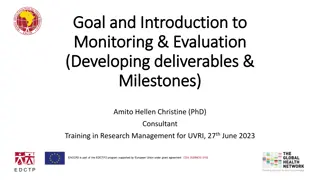

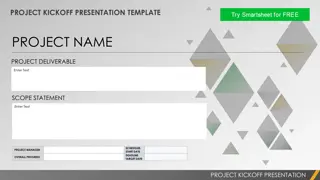


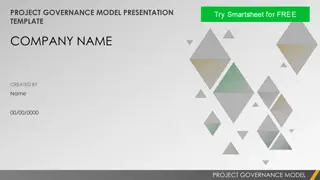
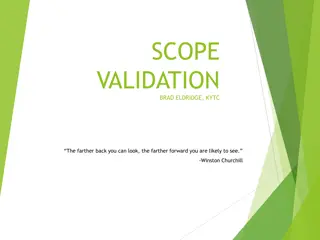
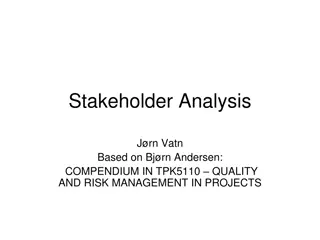
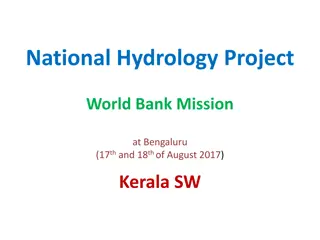
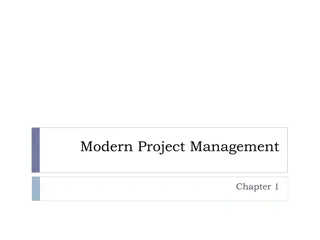

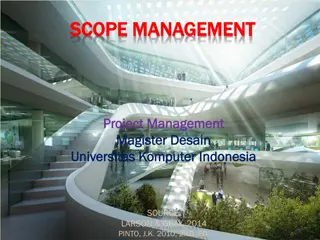
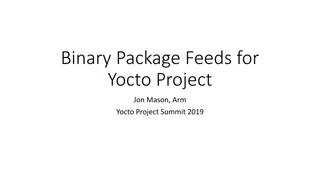


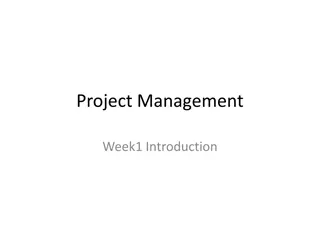
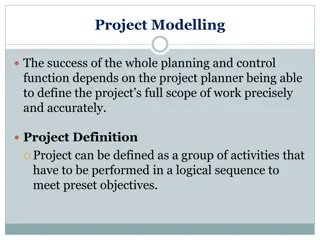

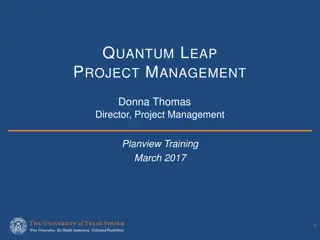
![Project Initiation Document for [Insert.Project.name] [Insert.Project.number]](/thumb/226757/project-initiation-document-for-insert-project-name-insert-project-number.jpg)